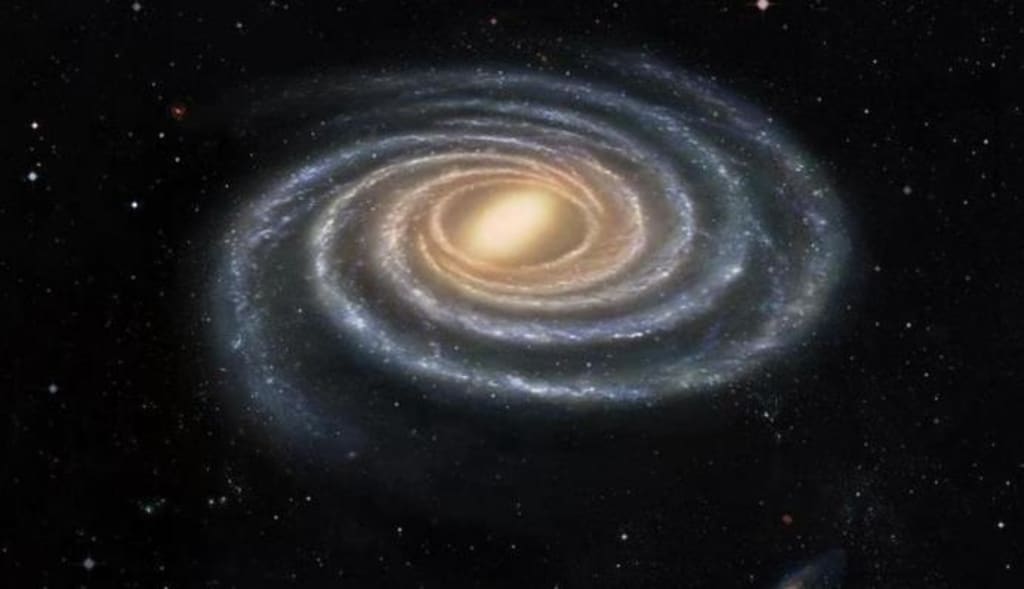A group of mysterious "yellow balls" appeared in the Milky Way, scattered in many places, scientists: they are very strange
A group of mysterious "yellow balls" appear in the Milky Way

Since 2010, American scientists have been searching for mysterious "yellow balls" in the universe. They were first discovered when they were sorting out the "Spitzer" space telescope. In the pictures of the Milky Way it took, scientists found a lot of Strange "yellow balls", what are they?
A group of mysterious "yellow balls" appear in the Milky Way
As of 2015, scientists enthusiasts have discovered 928 mysterious "yellow balls", which are scattered in many places in the Milky Way. Now, scientists have found out the truth about them. In the "yellow balls", there are groups of newly born stars, and you can also regard these "yellow balls" as "homes of stars".
The researchers said that through research, it was found that among these "yellow spheres", many stars are even only about 100,000 years old, and the largest is only 3 million years old.
You must know that although the solar system in which humans live is not very early, it has a history of about 5 billion years. Naturally, these newborn stars are also in their infancy.
In 2017, scientists have found more than 6,000 "yellow balls", and until today, this data is still increasing, which also means that not only new stars are born in the Milky Way, of course, there are also Stars age and seem very stable.
However, today's human observation equipment cannot conduct more in-depth research on them. If the James Webb Space Telescope, which has attracted much attention and has been "pigeon" many times, can be successfully launched in October this year, then, among them, Some "yellow balls" will also reveal the answer for us.
Why do new stars appear in the Milky Way?
The answer is very simple, because whether it is the universe or the Milky Way, they are now in a relatively young stage, the universe is constantly expanding, and so is the Milky Way. Naturally, a large number of new stars will appear.
We all know that according to modern scientific research, scientists believe that the number of stars in the Milky Way is about 100 billion to 400 billion. At the same time, the current diameter of the Milky Way is about 100,000 light-years, and each star in it , in fact, the quality, age, etc., are also different in all aspects, because even if they were born in the same nebula, there will still be certain differences.
At the same time, the Milky Way is constantly swallowing the surrounding dwarf galaxies to grow itself, and the rate of birth of new stars inside shows no signs of weakening. swell.
According to a previous study in "Astronomy and Space Science", about 3 billion years later, the Milky Way will increase by about 5%. Of course, the Milky Way at that time will also have a "century big" with the Andromeda Galaxy. "collision", when the two galaxies merge into one, the Milky Way could increase by at least 50%, and I have to say, it will be quite spectacular.
In the same way, around every young star, there is also a chance to give birth to a world of life, just like the earth and the solar system. You know, scientific research believes that the habitable zone of the Milky Way is not fixed, which also means that life and civilization may also be born in these mysterious "yellow balls" in the future.
Where is the habitable zone of the Milky Way?
In terms of distance, the distance between the solar system and the center of the Milky Way is about 26,000 light-years, and the diameter of the Milky Way is about 100,000 light-years, which means that our location is actually the outer region of the Milky Way, which is also the current stage. The habitable zone of the Milky Way.
Why do you say that? Because researchers found that at least 4 billion years ago, the habitable zone of the Milky Way was not here, but at the outer edge of the Milky Way.
Through research, there is a view that life was born in the outer star system of the Milky Way about 6 billion years ago, and it is not even ruled out that relatively complex life was born at that time, which also means that as early as human beings Before it appeared, civilizations already existed in the universe.
Subsequently, with the evolution of the Milky Way, the habitable zone in the Milky Way has also shifted, because many of the outer stars have entered the end of their lives. At this time, supernova explosions will kill many outer life. Therefore, the location of the solar system, It started to become the best life zone in the galaxy.
Of course, this situation will continue to change in the future. In the future, it may become a place about 13,000 light-years away from the center of the Milky Way, but at that time, if human civilization still exists, it may have evolved into a super civilization. It's gone. Naturally, we can't understand the future development of the Milky Way. What do you think the answer will be?
About the Creator
dardani lennon
The question mark is the key to any science
Enjoyed the story? Support the Creator.
Subscribe for free to receive all their stories in your feed. You could also pledge your support or give them a one-off tip, letting them know you appreciate their work.






Comments
There are no comments for this story
Be the first to respond and start the conversation.